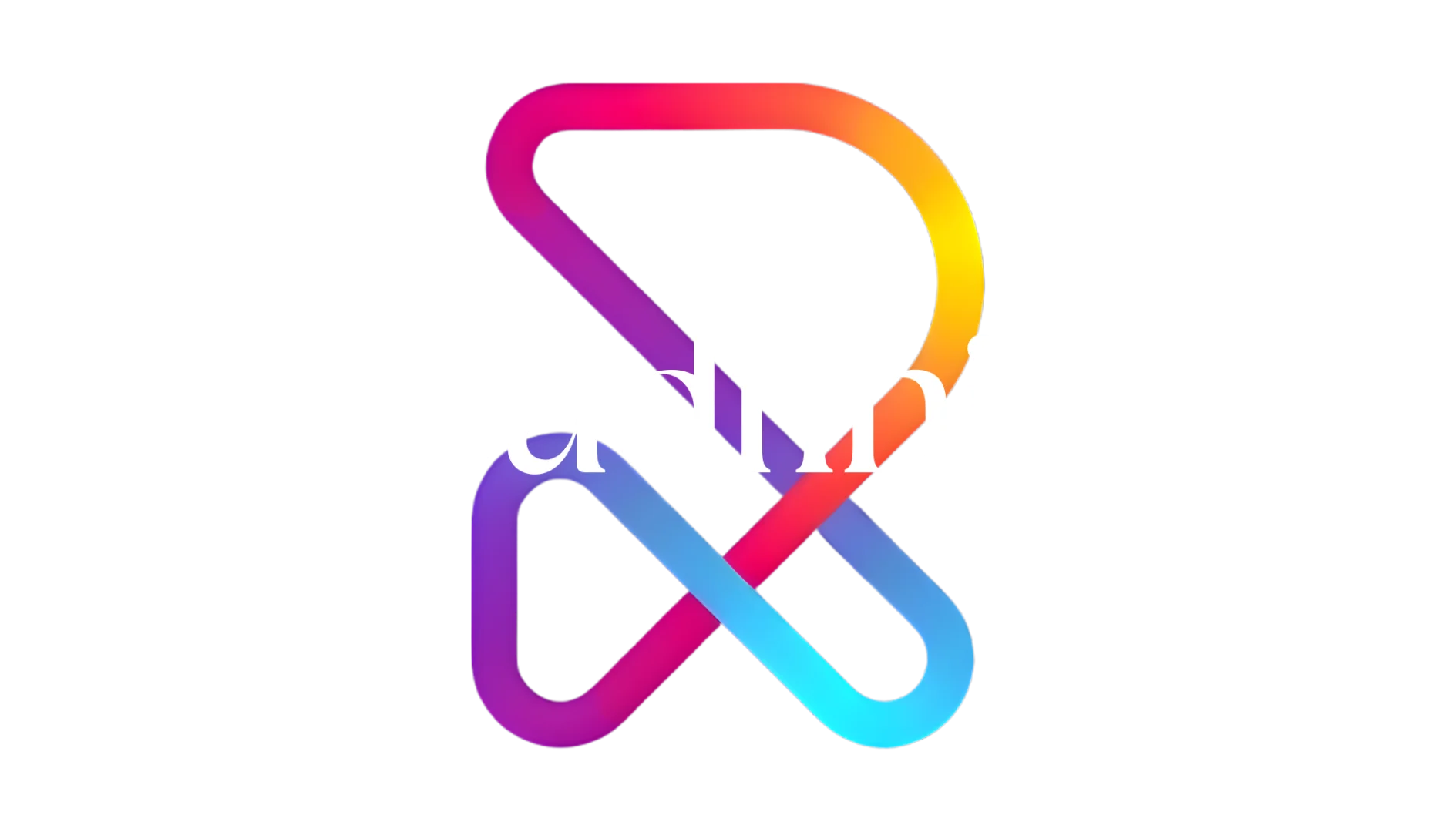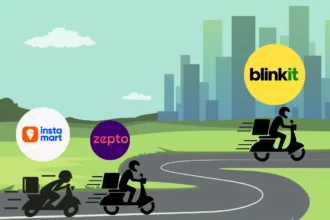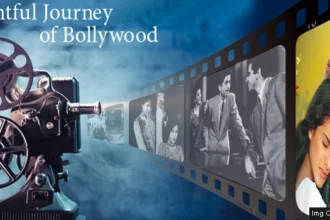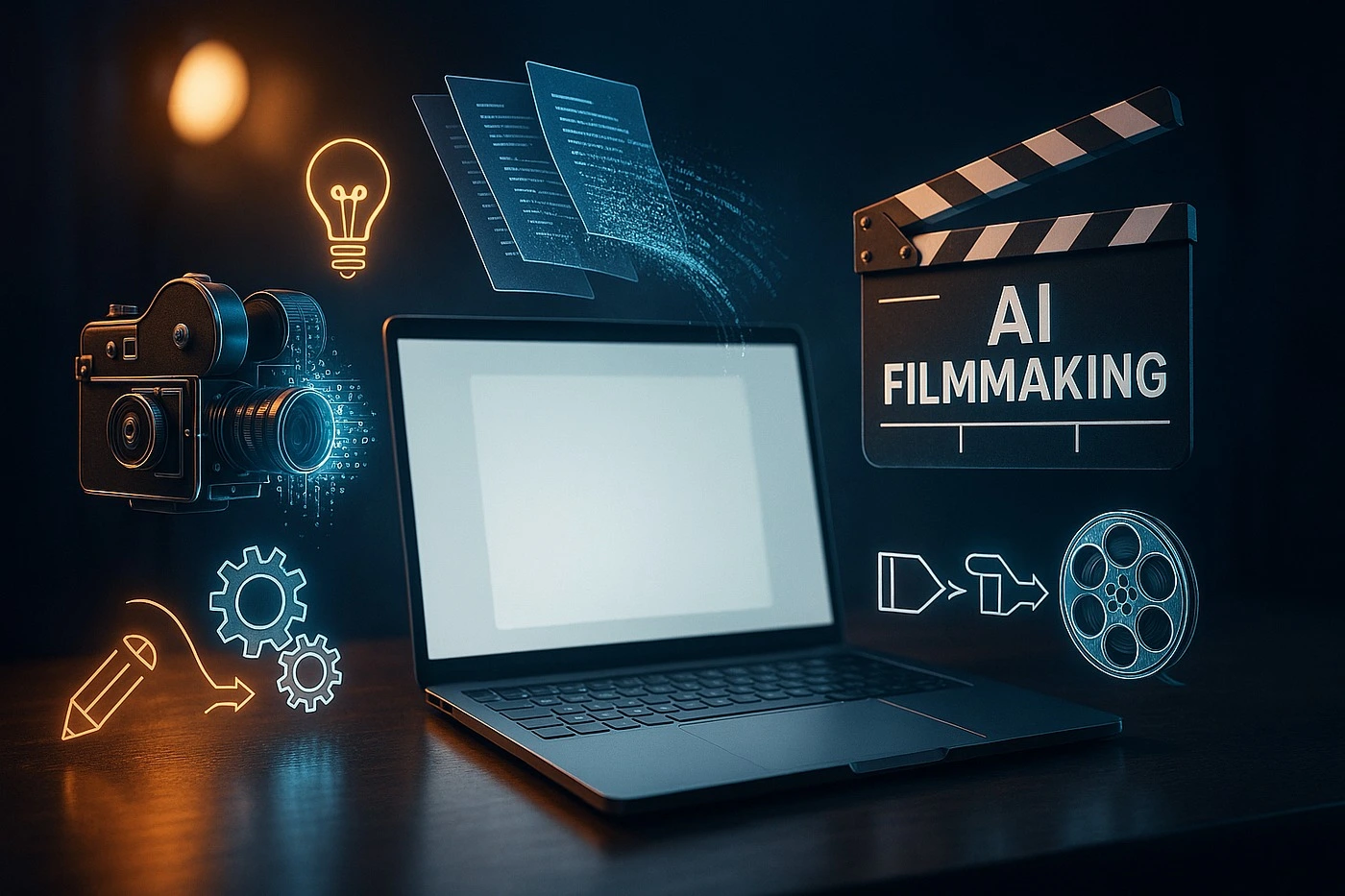Estimated Reading Time: 28-32 minutes ( 5,592 words)
Introduction
Hollywood is no longer just experimenting with AI — it’s actively using tools like ChatGPT to draft scenes, punch up dialogues, and generate alternate endings. Bollywood studios and independent creators are quietly testing AI-powered storyboards, pre-visualization tools, subtitle generators, and even early script drafts to speed up production cycles. And in 2024, the world witnessed a major turning point: the release of the first feature-length AI-written films, “The Last Screenwriter” and “The Sweet Idleness,” proving that AI is no longer a futuristic concept — it’s here, sitting in the writer’s room.
So the big question is no longer optional…
Can AI — specifically ChatGPT — truly write a blockbuster script capable of moving millions?
With the global AI-in-filmmaking market projected to hit US$ 23.5 billion by 2033 (Grand View Research), every corner of the entertainment industry is being forced to rethink storytelling. Screenwriters fear replacement, OTT platforms are exploring automated content pipelines, and film students in Mumbai, LA, and Seoul are already using AI tools as everyday creative companions. The debate is intense and universal:
Will AI become a co-writer, a competitor, or a complete replacement for human creativity?In this in-depth guide, we break down the real capabilities of ChatGPT, its current limitations, global case studies, India-specific adoption trends, and what the next decade of AI-generated cinema might look like. By the end, you’ll know exactly what ChatGPT can — and absolutely cannot — do when it comes to writing the next blockbuster film.
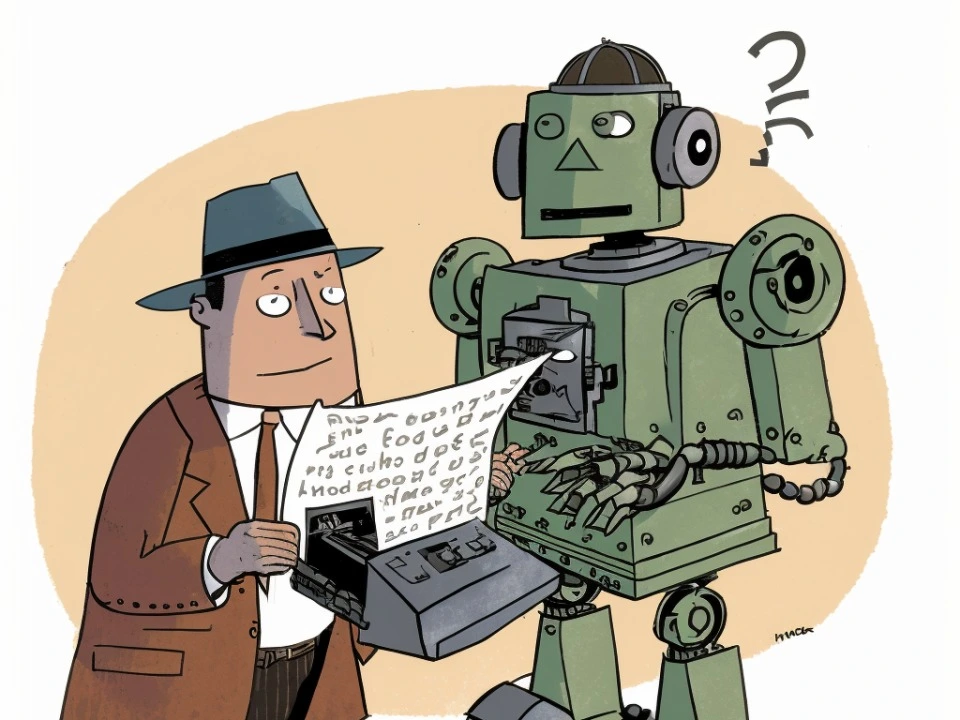
Market Overview: AI’s Rise in Filmmaking
Global Market Stats
AI in Filmmaking Market Growth
- The global AI in filmmaking market is experiencing explosive growth, rising from US$ 3.24 billion in 2024 to an expected US$ 23.54 billion by 2033.
(Source: Grand View Research) - This growth is driven by rapid adoption across pre-production (scriptwriting, casting), production (VFX automation, CGI), and post-production (editing, color grading, sound design).
Generative AI Adoption in Movies
- The Generative AI in movies segment is projected to grow at a 26.5% CAGR through 2030.
(Source: Global Industry Analysts) - The surge is fueled by widespread use of AI for:
- Dialogue generation
- Story idea development
- Script rewriting
- Character development
- Automated pre-visualization
- Digital humans
- Dialogue generation
AI for Script Analysis & Development
- AI-driven script analysis, sentiment tracking, character mapping, and dialogue optimization are becoming mainstream.
- The market for AI in script analysis alone is forecast to reach US$ 9.89 billion by 2033.
(Source: DataIntelo) - Studios are using AI to:
- Predict audience response
- Estimate box-office potential
- Identify plot inconsistencies
- Suggest tighter narrative structures
- Predict audience response
Filmmaker Adoption Trends
- A recent survey shows 45% of filmmakers already use AI tools for scriptwriting assistance in some form — brainstorming, rewriting, feedback, or dialogue polishing.
(Source: WiFiTalents) - Usage is significantly higher among:
- Independent filmmakers
- OTT writers
- Content creators for YouTube & streaming
- Animation studios leveraging AI pipelines
- Independent filmmakers
India-Specific Stats
India’s M&E Sector Growth
- India’s Media & Entertainment (M&E) industry is growing at one of the fastest rates globally.
- Expected to reach ₹3.1 trillion by 2027, fueled by OTT expansion, regional content boom, and digital-first filmmaking.
(Source: EY India M&E Report)
AI Adoption in Bollywood & Regional Cinema
- AI adoption across Bollywood and regional industries (Telugu, Tamil, Malayalam, Kannada, Marathi) is estimated to hit 40–50% by 2027.
(Source: Economic Times) - India is increasingly using AI for:
- Script ideation
- Automated storyboarding
- Virtual production stages
- AI-driven localization (dubbing, subtitles, voice synthesis)
- VFX automation in Tollywood & Bollywood blockbusters
- Script ideation
Cost Savings & Efficiency
- AI can reduce production costs by 25–30% for Indian studios by streamlining tasks like VFX, pre-visualization, set design, post-production editing, and localization.
(Source: ET EnterpriseAI) - This is particularly impactful for:
- Mid-budget films
- OTT India Originals
- Indie productions
- Regional cinema with tight budgets
- Mid-budget films
Can ChatGPT Write a Blockbuster Script?
Short Answer
ChatGPT can write a full screenplay — scenes, dialogues, characters, arcs, twists, and even genre-specific pacing — but it cannot write a blockbuster-level script entirely on its own.
It excels at speed, structure, and ideation… but falls short on emotional depth, originality, cultural nuance, and long-form narrative coherence.
A blockbuster is not just a script — it’s an emotional event. And AI still can’t fully replicate the human intuition required to create that.
Why AI Still Can’t Deliver a Blockbuster Alone
1. ChatGPT Has No Lived Experience
Blockbuster films are driven by real emotions, trauma, relationships, humor, and cultural memories.
AI cannot feel heartbreak, grief, joy, nostalgia, or the cultural pulse — it only predicts patterns from text.
2. AI Tends to Be Formulaic
Even with advanced models, AI often repeats:
- familiar tropes
- predictable conflicts
- safe character arcs
- cliché dialogues
This is because it’s trained on patterns, not personal creativity.
3. Blockbusters Require Emotional Intelligence + Risk-Taking
Hit movies like KGF, Baahubali, Inception, or Jawan succeeded because writers made risky, unconventional choices.
AI avoids risk — it optimizes for “what usually works.”
4. AI Lacks Cultural Timing & Sentiment Awareness
Blockbusters succeed because they:
- reflect current social moods
- tap into national emotions
- connect with generational themes
AI can analyze trends, but it cannot sense what an audience feels at a specific moment in history.
5. AI Struggles With Long-Form Narrative Consistency
Over 100+ pages, ChatGPT may:
- forget plot elements
- create continuity errors
- lose character voice consistency
- repeat motifs
This requires human correction.
However… ChatGPT Is a Game-Changer for Writers
Despite its limitations, ChatGPT is transforming scriptwriting workflows.
What ChatGPT Can Do Extremely Well
- Write 60–80% of a fast first draft
(scene structure, beats, dialogues, transitions) - Generate alternate plotlines & endings
Perfect for writers exploring multiple versions. - Fix pacing issues
AI is excellent at tightening weak scenes or improving rhythm. - Create outlines, loglines & treatments
Writers can go from concept → 15-page treatment in minutes. - Develop character arcs & personality traits
Useful for consistency and depth. - Rewrite scenes in any tone or style
Bollywood drama? Hollywood thriller? South Indian mass-action? AI can adapt. - Save 40–60% of writing time
Allowing creators to focus more on emotion, messaging, and originality.
Ideal Use Case
AI handles:
- structure
- formatting
- drafts
- revisions
- idea generation
Humans handle:
- emotion
- originality
- cultural context
- cinematic vision
- creative risks
The Real Future Model
👉 Human Vision + AI Efficiency = Fast, High-Quality Scriptwriting
The future of filmmaking isn’t AI replacing writers — it’s AI becoming the writing room’s most powerful assistant.
Writers who learn to collaborate with AI will produce better scripts, faster, with more creative experimentation.
How AI Scriptwriting Actually Works
AI scriptwriting isn’t magic — it follows a structured, data-driven process built on pattern recognition, storytelling rules, and continuous feedback loops. Below is a detailed breakdown of how models like ChatGPT generate a screenplay, what they do well, and where they fall short.
3.1 Steps AI Uses to Create a Script
1. Understand Genre Formulas
AI identifies the storytelling patterns and conventions of each genre:
- Action → hero’s journey, stakes escalation, set pieces
- Drama → emotional beats, relationship arcs
- Comedy → timing, punchlines, situational humor
- Thriller → tension curves, red herrings, reveals
- Romance → meet-cute, conflict, payoff
This helps AI choose the right pacing, tone, and narrative structure.
2. Generate a 3-Act or 4-Act Structure
AI automatically constructs the foundational story spine:
- Act 1 → Setup, theme introduction, inciting incident
- Act 2 → Rising conflict, midpoint twist, character growth
- Act 3 → Climax, resolution, emotional closure
- Optional Act 4 → Used in epic or action-heavy narratives (common in Indian cinema)
This ensures the script follows cinema-ready narrative architecture.
3. Build Character Profiles
AI creates character sheets that include:
- Personality traits
- Motivations & goals
- Flaws
- Backstory
- Relationship webs
- Character arcs (internal + external)
This helps maintain consistency across scenes.
4. Create Plot Points & Story Beats
AI outlines all essential story moments:
- Opening image
- Catalyst
- First big turning point
- Midpoint conflict
- All-is-lost moment
- Final showdown
- Resolution
These beats are based on screenwriting frameworks (Save The Cat, Hero’s Journey, K-drama structure, Bollywood masala arc, etc.).
5. Write Scene-by-Scene Breakdown
AI composes:
- Scene headers
- Scene descriptions
- Character actions
- Emotional beats
- Setting details
- Cinematic direction hints
This produces a professional screenplay layout.
6. Generate Dialogues
AI writes dialogues that follow:
- Character personality
- Genre tone
- Cultural context (when prompted)
- Scene tension
- Emotional intention
It can also rewrite dialogues to be:
- funnier
- tighter
- more dramatic
- more realistic
7. Refine Tone, Pace & Stakes
AI can adjust the entire script’s tone:
- darker
- more comedic
- more emotional
- kid-friendly
- OTT-style dramatic
- Hollywood-style crisp
It also ensures pacing remains smooth across 100+ pages.
8. Adjust Based on Human Feedback
AI improves dramatically with iteration. Users can request:
- stronger climax
- deeper conflicts
- more emotional authenticity
- higher stakes
- culturally relevant moments (e.g., Indian family dynamics, festival settings, regional language tones)
This “feedback loop” is where AI performs best — and why it’s a powerful co-writing tool.
3.2 Strengths of AI Scriptwriting
1. Fast Iteration
AI can generate multiple versions of scenes, endings, and character arcs within seconds — accelerating brainstorming and rewriting.
2. High Consistency
It maintains:
- character voice
- plot continuity
- tone uniformity
- structural coherence
Ideal for long-form scripts.
3. Strong Structure
AI excels at:
- narrative flow
- story balance
- pacing
- transitions
It doesn’t forget plot points the way human writers might.
4. Multilingual Capability
AI can write:
- English
- Hindi
- Tamil
- Telugu
- Spanish
- French
- Korean
…or mix languages for natural bilingual dialogues (common in Indian and global OTT).
5. Research + Fact Integration
AI can integrate:
- historical accuracy
- scientific details
- real-world references
- regional cultural elements
- geographic correctness
Useful for realistic world-building.
3.3 Weaknesses of AI Scriptwriting
1. Lack of Originality
AI generates what it has seen before — meaning:
- fewer unconventional ideas
- fewer high-risk creative moves
- limited genre innovation
Blockbusters need creative risks, which AI avoids.
2. Predictability
AI leans toward:
- common tropes
- expected plot twists
- safe endings
- familiar beats
This works for formulas but hurts innovation.
3. Emotional Depth Issues
AI struggles with:
- subtlety
- complex emotions
- layered relationships
- trauma representation
- cultural humor
- moral ambiguity
These are essential for truly memorable scripts.
4. Cultural Nuance Errors
AI may misrepresent:
- regional customs
- Indian family dynamics
- rural vs urban differences
- linguistic slang
- festival traditions
- Bollywood/Tollywood “mass moments”
Human writers must guide cultural authenticity.
Bollywood + Indian Cinema: AI’s Influence
Bollywood and India’s regional film industries—Tamil, Telugu, Malayalam, Kannada, Marathi—are rapidly entering an AI-assisted era. While Hollywood dominates global conversations around AI filmmaking, India is quietly becoming one of the fastest adopters, driven by cost-efficiency, high-volume content production, and multilingual markets. From pre-production to marketing to dubbing, AI is reshaping how Indian films are planned, created, and distributed.
Key Indian Trends
1) AI in Pre-visualization & Storyboards
Filmmakers are using text-to-image tools to generate quick visual ideas, helping directors see a scene before shooting. This saves lakhs in concept art and reduces pre-production time.
2) AI-edited Scenes & Public Debate (e.g., Raanjhanaa controversy)
The resurfacing of “AI-enhanced” clips from older films like Raanjhanaa sparked major conversations about ethics. This opened a public debate about who owns AI-edited versions of copyrighted movies.
3) Rise of AI Deepfakes of Indian Actors
Deepfake clips of SRK, Rashmika Mandanna, Aishwarya Rai, and others went viral on YouTube/Instagram, triggering police complaints, legal advisories, and calls for stricter digital laws.
4) Indie Films Made Under ₹1 Lakh
Small creators are producing full short films—sometimes even 45–60 minutes—using AI for:
- Character design
- Backgrounds
- Previsualization
- Dubbing
- Posters
This is democratizing filmmaking outside Mumbai, Hyderabad, and Chennai.
5) AI for Script Experiments
Young writers are using ChatGPT to create alternate endings, character arcs, and multilingual versions of scripts. It doesn’t replace creativity but accelerates the ideation phase dramatically.
Bollywood Use Cases
1) Marketing Video Automation
Studios are using AI tools to instantly cut trailers in multiple formats (YouTube, Instagram Reels, 9:16, 16:9, 1:1).
AI can also generate fan-style promo edits that previously took whole teams.
2) AI-generated Promo Stills
Posters, character look tests, and stylized artwork are created through AI generation tools. Production houses use them internally or for early hype building on social media.
3) Script Breakdown Automation
AI tools can analyze scripts and break them into:
- Scenes
- Props
- Locations
- Costumes
- Dependencies
This reduces workload for assistant directors and ensures better planning.
4) Budgeting & Scheduling with AI
AI tools are helping producers forecast:
- Manpower required
- Equipment usage
- Shooting days
- Post-production costs
This is especially valuable for mid-budget Bollywood films.
5) AI Dubbing + Multilingual Releases
With films now releasing in 5–10 languages, AI lip-sync dubbing is becoming common.
Benefits include:
- Lower dubbing costs
- Faster turnaround
- Consistent character voice across languages
Regional cinema is adopting this even faster than Bollywood.
6) VFX Enhancement & Cleanup
AI tools assist with:
- Background replacements
- Frame interpolation
- Clean plates
De-aging experiments
This helps reduce dependency on large VFX teams for smaller shots.
Pros & Cons of Using ChatGPT for Scriptwriting
AI scriptwriting is powerful, but not perfect. Below is a deeper, professional breakdown of how ChatGPT helps — and where it still falls short.
✅ Pros of Using ChatGPT for Scriptwriting
1. Saves 50–70% Writing Time
ChatGPT can generate:
- A complete first draft in hours instead of weeks
- Multiple versions of scenes instantly
- Faster rewrites and restructuring
This drastically speeds up pre-production and helps creators meet OTT platform deadlines.
2. Generates Hundreds of Ideas Instantly
Writers can input a genre, theme, or emotional tone and get:
- Plot variations
- Alternate twists
- Fresh character motivations
- Scene expansions
Perfect for brainstorming sessions, writers’ rooms, and indie creators who work solo.
3. Helps Break Writer’s Block
AI can fill in missing transitions, propose next steps in a stuck narrative, or offer new emotional beats.
Many screenwriters now use ChatGPT as a “thinking partner” rather than a replacement.
4. Great for Pre-visualization & Planning
AI helps with:
- Scene summaries
- Beat sheets
- Character arcs
- Episode breakdowns
This supports directors, producers, and storyboard artists in planning visually before shooting.
5. Perfect for Low-Budget Filmmakers
Independent creators who cannot hire:
- Script consultants
- Dialogue polishers
- Story analysts
…can use ChatGPT for these tasks at almost no cost.
6. Helps in Multilingual Versions
AI can:
- Translate scripts into 10+ Indian languages
- Preserve tone and style
- Adjust cultural references
- Create subtitling scripts
This is extremely useful for Pan-India releases across OTT and cinema.
7. Provides Consistency & Structure
ChatGPT follows established narrative formats (3-act, 4-act, Hero’s Journey), ensuring the script doesn’t derail structurally — especially helpful for first-time writers.
❌ Cons of Using ChatGPT for Scriptwriting
1. Formulaic Outputs
Because it’s trained on existing patterns, ChatGPT tends to produce predictable:
- Plot twists
- Character types
- Conflict structures
It rarely delivers bold, unconventional storytelling unless heavily directed.
2. Lacks Deep Cultural Awareness
AI often misses nuances like:
- Regional dialect humor
- Social subtext
- Cultural timing
- Festive symbolism
This is especially important in Indian cinema, where cultural detail drives emotion.
3. Cannot Create Original Humor
AI humor tends to be:
- Generic
- Overly literal
- Lacking situational wit
Human comedic timing, especially in Bollywood or Telugu comedy, is hard for AI to replicate.
4. Struggles With Emotionally Complex Scenes
AI can outline emotional beats, but deep moments—grief, conflict, trauma, romance—often feel:
- Surface-level
- Too clean
- Lacking subtext or tension
Emotional storytelling still demands human lived experience.
5. Requires Heavy Human Editing
Writers still need to fix:
- Pace issues
- Repetitive dialogues
- Lack of character depth
- Unrealistic scene transitions
So ChatGPT becomes a starting point, not the final writer.
6. Risk of Generic Characters
AI tends to create characters that blend into archetypes unless the writer gives extremely detailed instructions.
Bottom Line
AI is a productivity booster, not a creative replacement.
The strongest scripts come from:
👉 AI’s Speed + Human Emotion = Blockbuster-Ready Stories

Workflow: How To Use ChatGPT to Write a Script
Using ChatGPT for scriptwriting isn’t just typing “write a movie.”
The best results come from following a structured, professional workflow — similar to how real screenwriters work in Hollywood and Bollywood.
Below is a complete production-ready workflow with detailed steps, prompts, and techniques.
Step 1: Define Genre, Theme & Target Audience
Before generating anything, clearly decide the film parameters:
- Genre (thriller, rom-com, sci-fi, masala entertainer, etc.)
- Theme (revenge, love vs duty, corruption, hope, identity)
- Target audience (mass audience, OTT audience, kids, youth, family)
- Tone (dark, dramatic, comedic, emotional, inspirational)
- Setting (Mumbai, New York, Bengaluru startup culture, dystopian future, etc.)
Sample Prompt:
“You are a senior screenwriter. I’m creating a Mumbai-based thriller about political corruption. Tone: dark, emotional. Give me genre rules + mood board.”
This helps ChatGPT generate content aligned with industry expectations.
Step 2: Ask ChatGPT for a Full Outline (3–5 Variants)
Don’t settle for the first outline. Ask for multiple options.
Have ChatGPT create:
- 3-Act / 4-Act structure
- 15 Beat Save-the-Cat outline
- Episode breakdown (if web series)
- Alternate plot directions
Sample Prompt:
“Give me 3 unique outlines for a 2-hour Bollywood action thriller using the 3-act structure.”
Choose your favorite or merge elements from several.
Step 3: Build Deep Character Arcs
ChatGPT can generate extremely detailed character profiles when guided well.
Ask for:
- Backstory
- Motivation
- Flaws
- Strengths
- Secrets
- Emotional milestones
- Transformation arc
Pro Tip:
Ask ChatGPT to create inter-character tension webs to improve drama.
Example:
“Give me a conflict map between the hero, villain, mentor, and sidekick.”
Step 4: Generate Scenes Individually — Not All at Once
This is crucial.
Scripts become better when generated scene-by-scene, not in one pass.
For each scene, specify:
- Location
- Characters present
- Purpose of the scene
- Emotional goal
- Conflict
- What changes by the end
Sample Prompt:
“Write Scene 4: Police station interrogation. Hero discovers his brother’s secret. Tone: tense, minimal dialogue, high subtext.”
This leads to screenplay-level writing.
Step 5: Rewrite Manually for Emotion & Authenticity
AI-generated scenes often lack emotional depth.
Human editing is mandatory to improve:
- Cultural nuance
- Humor timing
- Realistic dialogue
- Subtext
- Local slang or dialect
- Emotional stakes
- Character uniqueness
Advanced Tip:
Ask ChatGPT to create 10 emotional variations of a key scene, then pick the best.
Step 6: Use AI for Alternate Angles & Variants
You can refine creative possibilities by asking:
- “Give 5 alternate endings.”
- “Rewrite this scene as a flashback.”
- “Make this fight scene more intense.”
- “Give a more unpredictable twist.”
- “Rewrite with darker humor.”
This mirrors how writers’ rooms produce multiple ideas before finalizing.
Step 7: Let ChatGPT Polish Pacing, Stakes & Dialogue
Ask ChatGPT to diagnose issues:
- Is pacing slow?
- Are stakes high enough?
- Are dialogues flat?
- Is Act 2 dragging?
Sample Prompt:
“Analyze my script and highlight slow or weak scenes. Suggest improvements.”
ChatGPT can also:
- Tighten dialogues
- Reduce filler scenes
- Improve transitions
- Clarify motivations
- Strengthen conflict
Step 8: Export to Screenwriting Format
Once the script is finalized, export it to industry-standard formats:
- Fountain (.fountain)
- Final Draft (.fdx)
- Celtx
- Trelby
- WriterDuet
ChatGPT can even format your scenes directly:
Prompt:
“Convert this into Fountain screenplay format.”
This makes the script ready for directors, producers, and actors.
Final Workflow Summary
👉 Best practice formula:
Human Vision + AI Speed + Human Rewrite = A Production-Ready Script
Popular AI Tools Used in Movies
AI is now used across every stage of filmmaking — from scriptwriting to dubbing to VFX. Below is the most comprehensive breakdown, covering global + India-specific tools.
A) Scriptwriting & Story Development Tools
1. ChatGPT (OpenAI)
- Most widely used AI for script drafting
- Creates: story outlines, character arcs, dialogues, scene breakdowns
- Great for: rewrites, alternate twists, multilingual writing
- Used in: The Last Screenwriter (2024)
2. Sudowrite
- Designed specifically for creative writers
- “Story Engine” helps build long-form plots
- Features AI rewriting, sensory detail enhancement, emotional tone fixes
- Popular in independent filmmaking communities
3. Jasper AI
- Good for short-form and episodic content
- Helps write promotional scripts, ad copy for movie marketing campaigns
- Used by digital studios for OTT promos
4. Claude (Anthropic)
- Generates more coherent long-form scripts
- Excellent at structure and internal logic
- Less hallucination compared to most AI models
- Helpful for realistic dialogues
5. Final Draft + AI Plugins
- The industry’s top screenwriting software
- New AI integrations for scene summaries, structure assessment, and dialogue polish
B) AI Storyboarding & Concept Art Tools
1. Midjourney
- Creates cinematic-quality concept art
- Used extensively for mood boards, production design, and world-building
- Supports ultra-detailed environments & character designs
2. Stable Diffusion
- Open-source model used by art departments
- Enables style-specific frames (anime, noir, hyperrealistic)
- Used in indie movies for AI-generated frame references
3. Krea AI
- Real-time generative visual tool
- Helps with live storyboard iterations
- Useful for directors who want quick visual previews
4. Leonardo.ai
- Hollywood VFX teams use it for prop visualization
- Creates consistent character design across multiple frames
5. Adobe Firefly (for Art Teams)
- Helps in generating textures, matte paintings, production art
- Integrated with Photoshop + After Effects
C) AI Video Generation Tools (Scene-Level & Shot-Level)
1. Runway Gen-3
- Leading AI video generator
- Used by indie filmmakers to create short AI films
- Helps generate B-roll, establishing shots, conceptual sequences
- Supports AI motion brush & frame interpolation
2. Pika Labs
- Ideal for stylized cinematic shots
- Great for animated sequences, fantasy scenes, VFX mockups
- Offers lip-sync, camera movement, and text-to-video
3. Sora (OpenAI)
- Next-gen video model capable of producing near-photoreal scenes
- Expected to disrupt pre-visualization, trailers, and test shoots
- Studios are experimenting with Sora for VFX-heavy sequences
4. Luma Labs
- 3D generative scenes from text
- Used for CGI environment creation
5. HeyGen
- Useful for quick AI avatars, character animations, and test reels
- Popular among content creators for dubbing and AI character dialogue
D) AI Voice, Dubbing & Sound Tools
1. ElevenLabs
- Most realistic AI voice synthesis
- Can generate multilingual dubbing with actor-like emotion
- Used in: short films, ads, character prototypes
2. Descript
- “Overdub” feature creates digital voice clones
- Used in podcasts, narrations, voice corrections, and ADR
- Helps fix dialogue continuity issues
3. Reverie AI (India)
- Indian-language dubbing & synthetic voice
- Supports 12+ Indian languages
- Used by regional OTT & edtech companies
- Strong emotional expression in Hindi, Tamil, Telugu
4. Cleanvoice AI
- Removes filler words, mic issues, background noise
- Great for polishing behind-the-scenes content or interviews
E) AI VFX, CGI & Post-Production Tools
1. Adobe Firefly + After Effects AI
- Auto rotoscoping (saves 80% time)
- Background removal
- Texture generation
- Style-transfer for scenes
2. Wonder Dynamics
- AI tool that replaces actors with CGI characters
- Real-time mocap without motion suits
- Used for sci-fi & fantasy short films
3. Autodesk Flame + AI
- AI-based clean-up, camera tracking, and compositing
- Industry standard in VFX facilities
4. Blackmagic DaVinci Resolve AI
- Facial recognition
- Color grading suggestions
- Smart object removal
- Scene cut detection
5. Topaz Video AI
- Upscaling footage to 4K/8K
- Noise reduction
- Frame restoration
- Used for remastering old films
F) AI Tools for Production Planning & Budgeting
1. Celtx AI
- AI-supported script breakdown
- Cost estimation
- Schedule planning
- Useful for indie and studio-level projects
2. Studiobinder + AI
- Shot lists
- Production schedules
- Automated call sheets
3. Filmustage
- Uses AI to analyze scripts and generate:
- Scene categories
- Shooting schedules
- Risk analysis
- Scene categories
G) India-Specific AI Tools in Filmmaking
1. Reverie AI – Multilingual dubbing
2. Pratilipi AI – Story generation for Indian storytelling
3. Animeta.ai – AI creator ecosystem
4. Iron Nor – AI-based location scouting tools for Indian cities
5. Fliki.ai – Text-to-video for regional content creators
Summary Table
| Category | Tools | Ideal Use Case |
| Scriptwriting | ChatGPT, Sudowrite, Claude | Drafting, character arcs, dialogues |
| Storyboarding | Midjourney, Krea, Stable Diffusion | Concept art, mood boards |
| Video Generation | Runway, Pika, Sora | AI films, VFX concepts |
| Voice & Dubbing | ElevenLabs, Reverie AI | Multilingual dubbing, ADR |
| VFX | Firefly, Wonder Dynamics | CGI, character replacement |
| Production | Celtx AI, Studiobinder | Scheduling, budgeting |
Challenges: Deepfakes, IP, Legal Risks
As AI-powered filmmaking grows, the legal, ethical, and regulatory risks around scripts, actor likeness, and content ownership are becoming the biggest barriers to mainstream adoption. Worldwide, studios, OTT platforms, and filmmakers are navigating a completely new legal landscape.
Below are the core challenges that affect Hollywood, Bollywood, streaming platforms, and independent creators.
The Big Issues
1) Who Owns an AI-Written Script?
This is currently the biggest copyright dilemma in film and entertainment.
- If ChatGPT writes a script, does the copyright belong to the user…
- …the AI model creator (OpenAI)…
- …or no one, because AI-generated text is not legally protected in many countries?
Current Status:
- US Copyright Office (2023–24):
AI-generated content cannot be copyrighted unless substantial human editing is included. - India:
No clear rule yet — but the Copyright Office suggests “only human-authored work is eligible.” - EU AI Act:
Requires disclosure and documentation of AI involvement.
Implication for filmmakers:
If a scene, dialogue, or plot twist is fully AI-generated, studios may struggle to claim exclusive rights.
2) What Happens If AI Accidentially Replicates Another Copyrighted Film?
AI models are trained on massive datasets and may unintentionally generate content that:
- resembles an existing movie
- contains similar dialogues
- mirrors established character arcs
- replicates a famous plot twist
This creates:
- Copyright infringement risks
- Lawsuits from creators & production houses
- Ambiguity over whether resemblance was intentional or algorithmic
Hollywood contract lawyers already demand AI origin checks for scripts submitted by writers.
India’s producers are raising similar concerns, especially with AI-written regional content.
3) Deepfake Misuse of Actors (Global + India)
Deepfakes are the fastest-growing legal threat in the film industry.
Common Misuses:
- Fake AI-generated video clips of actors doing/saying things they never did
- AI-generated ad promotions without consent
- Fake statements during elections or brand controversies
- Pornographic deepfakes using celebrity likeness
India-Specific Events:
- Deepfakes of Rashmika Mandanna, Kajol, Aishwarya Rai going viral
- Delhi Police Cyber Cell launching investigations in 2023–24
- Actors demanding legal rights over their “digital likeness”
Regulatory Push:
The Indian IT Ministry is drafting laws to protect “digital identity & likeness” of citizens.
4) Fake Celebrity Endorsements & Generated Ads
AI-generated images/videos of actors promoting products without permission are rising in India and globally.
This affects:
- brand trust
- actor reputation
- marketing integrity
Lawsuits have already been filed in the US by celebrities whose faces were used to advertise crypto scams, supplements, and skin creams without consent.
India is expected to pass strict advertising & endorsement AI laws by 2026.
5) Censor Board Challenges in India (CBFC)
AI-generated films and sequences may face unique censorship difficulties, including:
- Inconsistent tone due to AI-generated visuals
- Hyper-realistic violence created by AI
- AI-made religious/ethnic content that unintentionally offends
- Difficulty verifying whether an actor consented to AI likeness usage
- New rules needed for AI-only films (no actors, no real shooting)
The CBFC currently has no guideline for AI-produced scenes, but industry insiders expect amendments soon.
6) Mandatory AI Labeling Laws (Incoming Worldwide)
By 2027–28, major countries will likely require AI-generated content to be clearly labeled, including:
- “This movie contains AI-generated scenes”
- “This script includes AI-assisted writing”
- “This character uses an AI-generated voice”
- “This ad uses AI likeness simulation”
Already:
- EU AI Act (2024) mandates transparency
- China requires AI labeling on digital content
- US evaluating similar rules
- India expected to adopt a middle-ground approach with OTT-specific rules
This affects:
- movie credits
- compliance workflows
- producer liabilities
7) Regulatory Clarity Expected Globally by 2027–28
Between 2024 and 2028, expect new regulations covering:
- AI authorship rights
- Actor likeness & voice rights
- AI ethics in filmmaking
- Data sources for training models
- Obligatory risk assessments for studios
- Definition of “AI-assisted vs AI-generated content”
- Safety checks for deepfake misuse
India, the US, and the EU are already consulting industry bodies (producers guilds, OTT platforms, legal councils) to shape policy.
Outcome:
By 2030, AI filmmaking will likely be regulated like VFX or animation, with clear rules and creative restrictions.
FAQs Section
1. Can ChatGPT really write a full movie script from start to finish?
Yes — ChatGPT can generate a full movie script, including plot outlines, dialogues, character arcs, scene descriptions, and transitions.
However, it currently works best as a co-writer rather than a complete replacement for human screenwriters.
Here’s why:
- It can rapidly generate ideas, scenes, and dialogue.
- But it struggles with deep emotional nuance, long-form consistency, and truly original storytelling beyond patterns learned from training data.
- Human editing is needed for pacing, cinematic chemistry, and character depth.
So yes—AI can write the script structurally, but transforming it into a blockbuster still requires human creative judgment.
2. How do filmmakers currently use AI tools like ChatGPT in screenwriting?
Filmmakers use ChatGPT in multiple phases of writing:
- Brainstorming high-concept ideas
- Generating loglines, taglines, and title variations
- Creating character backstories
- Producing alternative endings or plot twists
- Fixing structural issues using the three-act or five-act format
- Speeding up drafts from months to days
In production studios, AI is increasingly becoming a part of writers’ rooms, helping teams iterate faster. But final decisions still rest with human writers, directors, and producers.
3. Could AI eventually replace human screenwriters?
Unlikely—at least in the foreseeable future.
Here’s why:
- Movies rely on human emotion, culture, trauma, humor, and lived experience — all areas where AI struggles.
- AI’s creativity is derivative, meaning it recombines existing ideas rather than inventing new ones.
- AI cannot understand political context, cultural nuance, or moral ambiguity the way humans can.
- Hollywood unions (like the WGA) have introduced AI-related restrictions that prevent total replacement.
AI will likely become a powerful assistant, not a replacement.
4. Has any AI-generated movie been produced yet?
Yes, several short films and indie projects have used AI-generated scripts, including:
- “The Safe Zone” (AI-written thriller short)
- “Scripted by AI” YouTube series
- AI-assisted festival shorts created using GPT models and text-to-video tools
However, no mainstream studio blockbuster has been fully AI-written. Major studios are exploring AI for:
- Pre-visualization
- Dialogue enhancement
- Animation
- Production scheduling
But storytelling remains human-driven.
5. What are the limitations of using ChatGPT for scriptwriting?
ChatGPT has strong abilities but clear limitations:
- Repetition over long scripts
- Shallow emotional depth
- Difficulty maintaining character consistency across 80–120 pages
- Tendency to generate cliché plotlines
- No understanding of budget, casting feasibility, or practical production constraints
- Cannot integrate direct copyrighted material without paraphrasing
These limitations make it better suited for drafting than for delivering a finished, production-ready script.
6. Is it legal to use ChatGPT to write a movie script?
Yes, it’s legal to use ChatGPT for writing — but with caveats:
- Scripts generated by AI may not be fully copyrightable in many countries because they lack human authorship.
- To claim copyright, a human must contribute substantial creative input.
- Studios often avoid fully AI-written scripts due to legal ambiguity.
- Writers must ensure the script does not unintentionally imitate copyrighted works.
Always keep human involvement to secure intellectual property rights.
7. Will AI reduce jobs for screenwriters?
AI may reduce some low-level writing tasks, such as:
- Brainstorming
- First-draft creation
- Rewriting minor scenes
- Summaries and adaptations
But it is expected to increase demand for:
- Script polishers
- AI supervisors
- Prompt engineers for storytelling
- Human editors ensuring emotional realism
- Writers who collaborate with AI
AI changes the writing process — but does not eliminate the need for writers.
8. Can AI help new filmmakers or beginners become better writers?
Absolutely. AI democratizes screenwriting:
- Beginners can generate complete script formats instantly.
- It helps non-writers develop industry-standard screenplay structures.
- It assists with grammar, pacing, scene flow, and tension-building.
- It can act as a free writing partner, reducing creative blocks.
For indie creators and YouTubers, AI drastically cuts down script development time.
9. What are the advantages of using ChatGPT in film production?
Some major benefits include:
- Cost reduction for drafts
- Rapid prototyping of ideas
- Multiple versions of scenes in minutes
- Consistent writing assistance 24/7
- Research speed for historical, scientific, or cultural themes
- Localization for different regions or languages
- Smoother revision cycles
Studios increasingly use AI to speed up the pipeline, not replace human creativity.
10. Can ChatGPT write dialogues that sound natural and cinematic?
ChatGPT can generate natural-sounding dialogues but may struggle with:
- Subtext
- Raw emotional tension
- Ultra-specific cultural speech
- Comic timing
- Improvised-style human chaos
But with good prompts — e.g., “Write sharp, Tarantino-style tension dialogue” — the output can be surprisingly high quality.
Human editing is still essential for authenticity.
11. Can AI help create storyboard or visual concepts for scripts?
Yes — when combined with tools like:
- Midjourney
- DALL·E
- Runway Gen-3
- Pika Labs
Filmmakers can produce:
- Concept art
- Character designs
- Location visuals
- Mood boards
- Animated pre-viz scenes
AI is becoming a massive asset in visual development, even before a script is locked.
12. What does the future of AI in filmmaking look like?
Expect rapid evolution in:
- AI-assisted writers’ rooms
- Hybrid human+AI script development
- Automated screenplay formatting
- AI writing continuity and pacing checks
- Tools that generate shot lists, transitions, or scene durations
- Early-stage animation and simulation
In the long run, AI will help filmmakers create content faster, cheaper, and more globally targeted — without removing human vision.
Summary
- AI tools like ChatGPT are transforming filmmaking by helping writers brainstorm ideas, generate dialogue, and speed up draft creation.
- While AI can create full scripts, it still lacks human emotional depth, cultural nuance, and long-form narrative consistency — making it more of a co-writer than a replacement.
- Filmmakers currently use AI for script outlines, character development, alternate endings, and quick rewrites, especially in indie and digital-first productions.
- Fully AI-written blockbusters don’t exist yet; human creativity and judgment continue to drive storytelling in mainstream cinema.
- Legal and copyright concerns prevent studios from relying entirely on AI-generated scripts, reinforcing the need for strong human involvement.
- The future of filmmaking will likely be hybrid — AI for speed and structure, humans for originality, emotion, and cinematic storytelling.
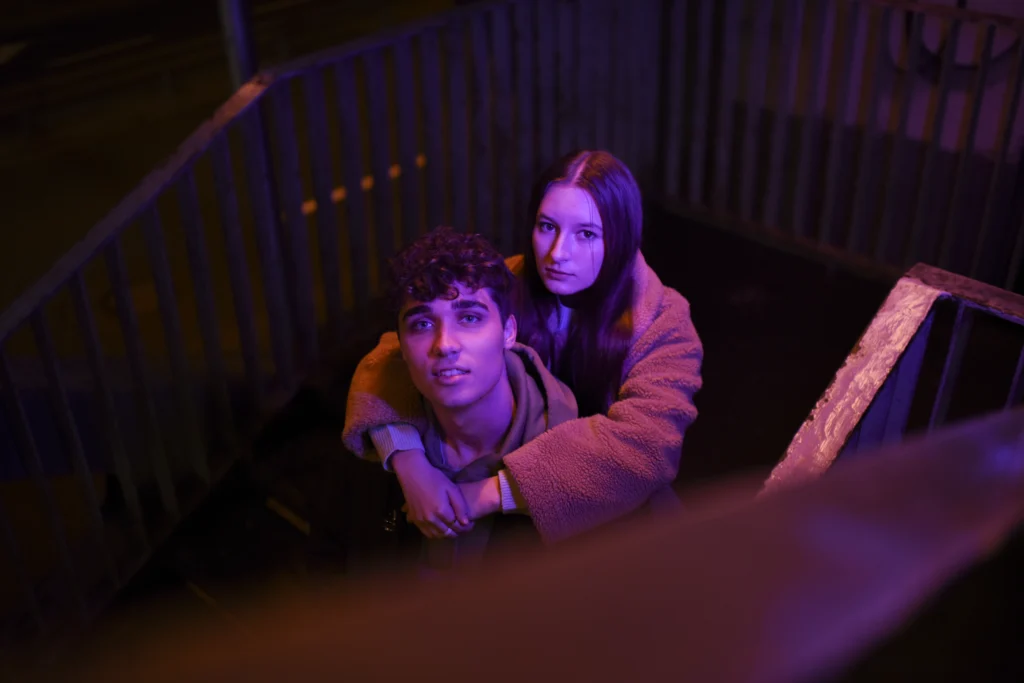
Conclusion
AI in filmmaking isn’t a distant concept anymore — it’s actively reshaping how stories are imagined, written, and produced. Tools like ChatGPT have become powerful assistants that help screenwriters cut drafting time, explore new plot variations, and unlock creative possibilities that were once limited by time and budget. But despite these advances, AI still cannot replicate the emotional intuition, cultural sensitivity, and lived experiences that human writers bring to cinema. A blockbuster isn’t just a sequence of scenes; it’s a shared human moment — and AI can’t fully deliver that alone.
What we’re witnessing now is the rise of a hybrid creative model where humans lead and AI enhances. From Hollywood studios experimenting with AI-assisted script development to Indian filmmakers using generative tools for dialogues, subtitles, and storyboarding, the industry is shifting toward faster, smarter workflows — not machine-made movies. The future of storytelling will likely be decided by those who embrace AI as a partner rather than a replacement.
In essence, AI can help write a script — sometimes even a good one — but a true blockbuster still needs human heart, cultural authenticity, and narrative intuition. As creators learn to balance technology with originality, the next decade may bring some of the most innovative films we’ve ever seen, powered by both human imagination and machine intelligence.
References & Sources
- McKinsey – The Economic Potential of Generative AI
https://www.mckinsey.com/capabilities/quantumblack/our-insights/the-economic-potential-of-generative-ai - PwC Global Entertainment & Media Outlook (2024–2028)
https://www.pwc.com/outlook - Statista – Global AI Market Size Forecast (2024–2030)
https://www.statista.com/statistics/1365152/global-artificial-intelligence-market-size/ - Deloitte – The Future of Generative AI in Media & Entertainment
https://www2.deloitte.com/global/en/insights/industry/technology/generative-ai-in-media.html - World Economic Forum – AI’s Impact on Creative Industries
https://www.weforum.org/agenda/2023/ai-creative-industries-future/ - Hollywood Reporter – How Filmmakers Are Already Using AI Tools
https://www.hollywoodreporter.com/business/digital/ai-screenwriting-film-industry-1235538504/ - Variety – AI in Scriptwriting & WGA Guidelines
https://variety.com/2023/biz/news/wga-ai-rules-explained-1235642368/ - Writers Guild of America (WGA) – Official AI Usage Framework
https://www.wga.org/ - Indian Express – How AI Tools Are Entering Indian Film Production
https://indianexpress.com/article/technology/ai-in-indian-cinema-film-production-8967420/ - Economic Times – Indian Media & Entertainment AI Adoption Trends
https://economictimes.indiatimes.com/tech/ - CB Insights – Generative AI in Media & Content Creation
https://www.cbinsights.com/research/report/generative-ai-media/ - OpenAI – GPT-4 Technical Capabilities Overview
https://openai.com/research/gpt-4 - Pixar / Disney Research – AI Tools for Animation & Story Development
https://studios.disneyresearch.com/publications/ - UNESCO – AI & Creativity Report https://unesdoc.unesco.org/ark:/48223/pf0000385151



